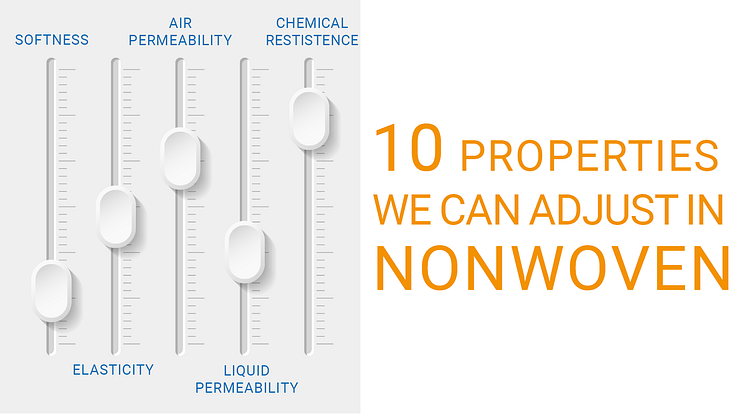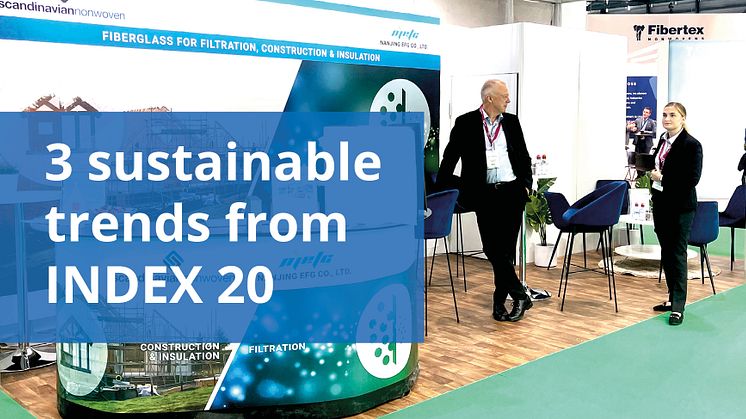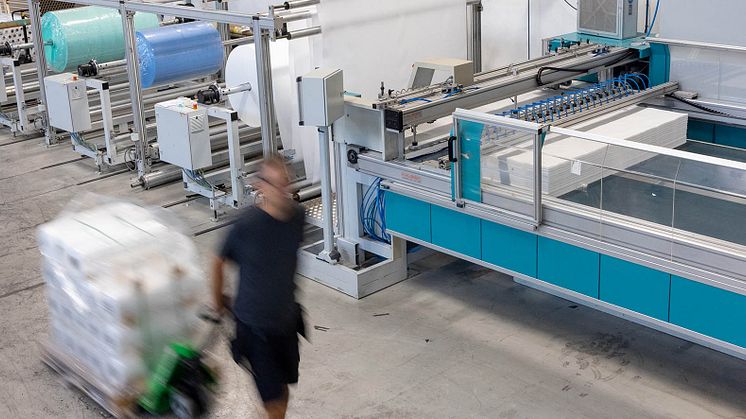
News -
10 properties that we can adjust in nonwovens
Nonwoven is a group of industrial textiles used in everything from wipes and hygiene products to cars and building materials. The material is extremely flexible and by treating it in different ways, you can also adjust the properties of the material.
1. Fluid permeability
Nonwoven can withstand liquid - unlike, for example, paper, which it sometimes replaces. But we can control how the material interacts with liquid.
For example, we can add other materials or solutions that makes the material absorb liquids. But by coating it with other materials, we can ensure that nonwoven blocks liquid - for example, it is needed in construction materials for walls in wet rooms and roofs.
In some cases it is important that the nonwoven lets liquid pass through such as in the outer layers of diapers or absorbents. We control the fluid permeability by adjusting the density and thickness of the material.
2. Air and particles
By adjusting the density and/or thickness and by choosing the right type of nonwoven, we can also control the air passage. In some cases, it is important that air can flow through the material, such as with air filters, but in other cases we need to be able to block the air flow - as in, for example, wind-protective building materials made from coated nonwovens.
Some nonwovens, such as needle felt, are also very good for letting air through while capturing particles that you want to filter out.
3. Softness
Requirement on softness is important in many cases - often in products that are to be used against the skin, such as wipes, hygiene products, healthcare products and diapers.
Some nonwovens are naturally softer and by treating the material differently, it can be made more or less soft on both or, in some cases, only on one side.
4. Chemical resistance
In some products, nonwovens need to be able to withstand exposure to strong chemicals. Nonwoven made from polypropylene can withstand really difficult chemical – even acids such as hydrochloric acid.
5. Resistance to UV light and sun
It is important that materials that are to be exposed to direct sunlight can withstand UV light that normally breaks down materials - in, for example, construction and roofing products. We can process some of our nonwoven to withstand UV light considerably longer than normal.
6. Static
In some industry application it is important that the materials do not become static - there are nonwoven materials that are treated to be precisely antistatic.
7. Smell
In some cases, it is very important to be able to remove unpleasant odors - such as in absorbents for food during transport or in filters. It is possible to treat the nonwoven with natural means that convert unpleasant air into a neutral odor. Read more about how nonwovens can neutralize odours here.
8. Elasticity and Firmness
Another factor that is important is how dull or stretchable the material is. In some cases, the nonwoven needs to be extremely mute - so that it does not move at all when it is exposed to movment - fiberglass is a good solution for that type of situations.
In other cases, the material needs to be able to stretch more or less and adapt to the environment. And there are even nonwovens that are elastic – meaning that it is stretchy but it returns the original shape - it is excellent for disposable clothing in healthcare, for example. Read more abour elastic nonwoven here.
9. Flame retardant
In some building materials and in the auto industry, it is important that the material is flame retardant. There are treatments that make the nonwoven inhibit fire.
10. Sustainability
There are many alternatives to make nonwoven more environmentally friendly, sustainable or to reduce their climate footprint. Either by using recycled material, making the material recyclable or by using degradable raw materials such as PLA which is starch based. Read more about sustainable nonwovens here.
Scandinavian Nonwoven is Scandinavia's largest nonwoven retailer. We are experienced in helping customers to identify the right nonwoven for their needs. Or we help them to develop new nonwovens that completely meets the requirements that the they place on the material.
Contact us at info@nonwoven.se if you want help or visit our website to order samples.





